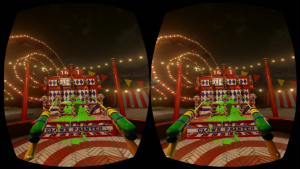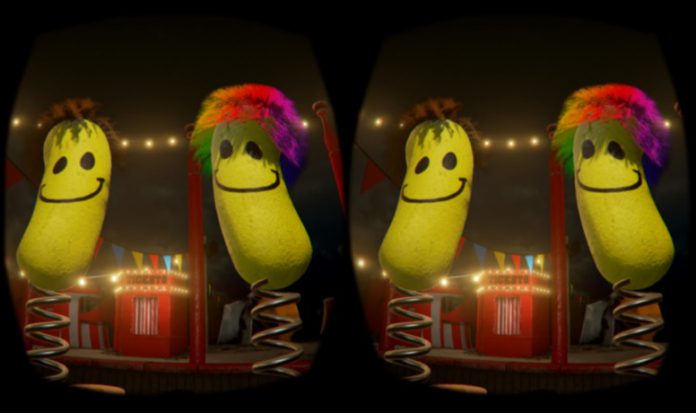NVIDIA’s assertion of their intentions to aid virtual reality (VR) progress as a medium is about to take a significant step forward with the upcoming launch of the GeForce GTX 1000 series. It’s no longer a simple case of pushing higher tech specs and driver-level compatibility, but now aggressively fostering an audience also. VR Funhouse is a huge step towards this: a showcase of the company’s passion in an easily digestible format. A mini-game compilation built to showcase NVIDIA’s work on making physics processing less computationally hungry (and thus more VR friendly) VR Funhouse may be a technical demonstration at present, but its ambitions stretch far beyond this. Indeed, NVIDIA has already confirmed that VR Funhouse will be released on Steam and that they will offer up an open source version to allow the community to build it alongside their internal teams, but none of this would matter if the base experience doesn’t offer a high quality entry point. The mini-games on show use the overarching theme of fairground attractions. A night time setting at a fairly low key carnival offers up basketball, shooting, whack-a-mole style attractions and more. NVIDIA offered up two versions of VR Funhouse at their preview event, the first limited to just five mini-games. Armed with a goo gun, the player has to shoot plastic clowns in the mouth to fill the balloons atop their heads. A demonstration of liquid particle effects and their realistic interpretation of physics; the goo sprayed behaves realistically from the moment of being shot til it settles after impact. A shooting gallery in which the player is equipped with two pistols presents a similar effect as they shoot crockery, with the broken pieces moving in a realistic PhysX-controlled fashion even after having settled. They are not simply images representing an object: they are individual objects even after having been smashed. This was showcased to a greater extent in the second version of VR Funhouse offered for hands-on, in which a skeet shooting experience saw cannons firing crockery into the air above the player. Here, armed with the same pistols, the player is able to shoot tiny fragments of the broken crockery and see them react in the exact same fashion as they would if it were still whole. It’s an impressive feat to have such a vast quantity of small items react naturally in real-time, even more so when seen in a sword-on-balloon battle where each pop of a balloon litters the environment with physics-enabled confetti.

Developed using Unreal Engine 4, VR Funhouse is designed to showcase the many new VR features being brought into play with the upcoming launch of the GeForce GTX 1080 (and other subsequent models in the GeForce GTX 1000 series), and as such will stand as an example of the possibilities NVIDIA’s VRWorks suite can offer both developers and the end user. There’s no currently no details on when VR Funhouse will launch, nor the PC specifications it will require, but VRFocus will of course keep you updated with all the latest information from NVIDIA.















